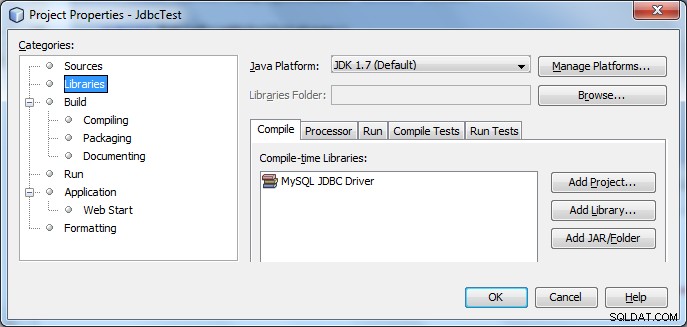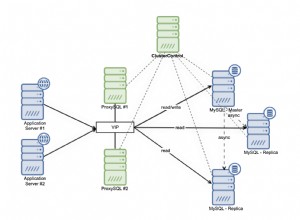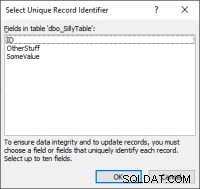Poniżej znajduje się klasa, która przedstawi podstawy tego, co chcesz zrobić podczas odczytywania danych z bazy danych MySQL do JTable w Javie.
import java.awt.*;
import java.sql.*;
import java.util.*;
import javax.swing.*;
import javax.swing.table.*;
public class TableFromMySqlDatabase extends JFrame
{
public TableFromMySqlDatabase()
{
ArrayList columnNames = new ArrayList();
ArrayList data = new ArrayList();
// Connect to an MySQL Database, run query, get result set
String url = "jdbc:mysql://localhost:3306/yourdb";
String userid = "root";
String password = "sesame";
String sql = "SELECT * FROM animals";
// Java SE 7 has try-with-resources
// This will ensure that the sql objects are closed when the program
// is finished with them
try (Connection connection = DriverManager.getConnection( url, userid, password );
Statement stmt = connection.createStatement();
ResultSet rs = stmt.executeQuery( sql ))
{
ResultSetMetaData md = rs.getMetaData();
int columns = md.getColumnCount();
// Get column names
for (int i = 1; i <= columns; i++)
{
columnNames.add( md.getColumnName(i) );
}
// Get row data
while (rs.next())
{
ArrayList row = new ArrayList(columns);
for (int i = 1; i <= columns; i++)
{
row.add( rs.getObject(i) );
}
data.add( row );
}
}
catch (SQLException e)
{
System.out.println( e.getMessage() );
}
// Create Vectors and copy over elements from ArrayLists to them
// Vector is deprecated but I am using them in this example to keep
// things simple - the best practice would be to create a custom defined
// class which inherits from the AbstractTableModel class
Vector columnNamesVector = new Vector();
Vector dataVector = new Vector();
for (int i = 0; i < data.size(); i++)
{
ArrayList subArray = (ArrayList)data.get(i);
Vector subVector = new Vector();
for (int j = 0; j < subArray.size(); j++)
{
subVector.add(subArray.get(j));
}
dataVector.add(subVector);
}
for (int i = 0; i < columnNames.size(); i++ )
columnNamesVector.add(columnNames.get(i));
// Create table with database data
JTable table = new JTable(dataVector, columnNamesVector)
{
public Class getColumnClass(int column)
{
for (int row = 0; row < getRowCount(); row++)
{
Object o = getValueAt(row, column);
if (o != null)
{
return o.getClass();
}
}
return Object.class;
}
};
JScrollPane scrollPane = new JScrollPane( table );
getContentPane().add( scrollPane );
JPanel buttonPanel = new JPanel();
getContentPane().add( buttonPanel, BorderLayout.SOUTH );
}
public static void main(String[] args)
{
TableFromMySqlDatabase frame = new TableFromMySqlDatabase();
frame.setDefaultCloseOperation( EXIT_ON_CLOSE );
frame.pack();
frame.setVisible(true);
}
}
W NetBeans IDE, którego używasz — musisz dodać Sterownik MySQL JDBC we właściwościach projektu, tak jak tutaj wyświetlam:

W przeciwnym razie kod zgłosi SQLException z informacją, że nie można znaleźć sterownika.
Teraz w moim przykładzie yourdb to nazwa bazy danych i animals to nazwa tabeli, do której wykonuję zapytanie.
Oto, co zostanie wydrukowane:

Notatka pożegnalna:
Powiedziałeś, że jesteś nowicjuszem i potrzebujesz pomocy w zrozumieniu niektórych podstawowych klas i koncepcji Java. Wymienię tutaj kilka, ale pamiętaj, że zawsze możesz przeglądać dokumenty na stronie Oracle.




